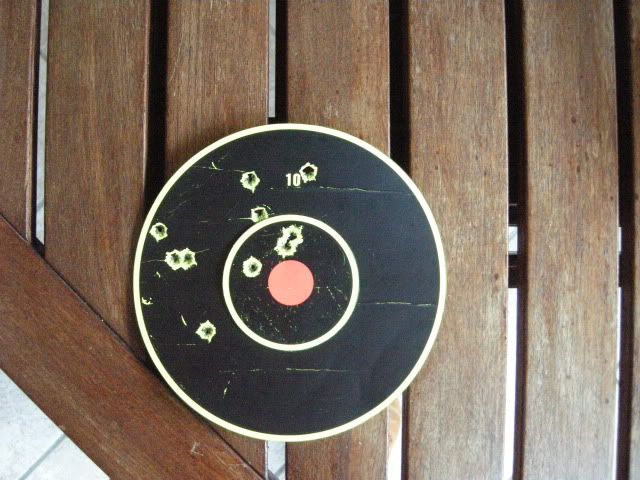Re: Yesterday at 600 y
I'm using a RSI shooting lab software to analize my target.... and from this I take my average group radius... I put my target on the screen of my lap top and with the mouse click I generate a target to be read by the software.. If you use the older mode ( red below ) the groups of my target is about .50 MOA....awesome not so bad, read the following..
Group Location Analysis
Average Elevation and Windage Error
The Average Elevation and Windage Error compares the group's statistical center to the
point of aim. These two pieces of information indicate how well the firearm is sighted to
hit the point of aim and is used to adjust sights. (See "Adjust Sight" menu below.)
Group Size Analysis
String Measurement
The String Measurement is an old method of measuring group size to determine a
shooter's skill at hitting a target. It assumes the point of aim is always the desired point
of impact and is simply the sum of the distances from the point of aim to each bullet hole.
Originally a string was used to gather the distances, hence the name. The method is
still an extremely valid measure of total error relative to the aim point.
String Measurement cannot be used for setting sights because it only measures the
magnitude of total error not the direction of error. It is also not indicative of group size
because a tight group away from the aim point will produce a large string measure.
Maximum Spread
<span style="color: #FF0000">The Maximum Spread (also known as group diameter or extreme spread) is the distance
between the centers of the most widely dispersed shots in the group. This is the most
common method used to measure group sizes. Unfortunately it is a poor measure of
group size where the shots are widely dispersed because only two shots out of the
entire group are considered. One stray shot can drastically change the measure. A
tight group of four shots with one flyer will produce the same result as a widely dispersed
group using this method.</span>
Vertical & Horizontal Spread
The Horizontal and Vertical Spread of a group is simply the greatest distance
between shot centers on the vertical or horizontal plane. This contrasts with the
Maximum Spread which can be at any angle across the group. These measures are
understood by most shooters to be a “general” indicator of load or mechanical
problems and "pulling" by the shooter. The Average Vertical or Horizontal Error is a
better measurement then Vertical & Horizontal Spread for these purposes.
Average Group Radius
The average distance from the group center (not the aim point) to each shot is the
Average Group Radius. This measure is perhaps the best measure of group size but
difficult to do manually. This program segment was written to facilitate calculation of this
measurement. Unlike String Measurement, the Average Group Radius does not
assume the point of aim is the desired impact point. The Average Group Radius can be
used to measure group size when the impact point is intentionally high (rifle sighted for
maximum point blank range and shooting high at 100 yards), and is the best measure
for evaluating the overall accuracy of loads.
Average Vertical & Horizontal Error
The Average Horizontal and Vertical Error is the average of errors from the group's
statistical center. This is the best measure for detecting problems because it
averages the data to reduce the influence of flyers.
If the Average Vertical or Horizontal Error is larger it is called "stringing"; and may
indicate a crosswind, mechanical problem, or poor loads. A crosswind or sight cant
will disperse shots horizontally for a larger Average Horizontal Error. Detonation
problems caused by inconsistent primer ignition due to variations in primer pocket
depth or primer thickness and powder charge variations will produce inconsistent
velocities and vertical stringing. Inconsistent crimping, bullet irregularities or other
loading problems may not "string" in a particular direction. A loose gun sight, or
broken scope may also cause stringing in either direction.
Extreme Shot Data
The Maximum Shot Radius should only be slightly larger than the Average Group Radius.
Too great a difference is a definite indication of shooter error or a bad load. It is easy to
identify "flyers" when using Shooting Lab's visual graphic of a target but not when
reviewing statistical data posted to a spreadsheet program. The extreme shot
measurements can be used to confirm "flyers" or may help identify the occasional
mechanical/load problem.
Maximum Shot Radius
The Maximum Shot Radius is simply the distance from the group center to the center
of the most distant hole in the group.
High/Low Shots & Right/Left Shots
These dimensions identify the location of extreme shots relative to the group's
statistical center.



